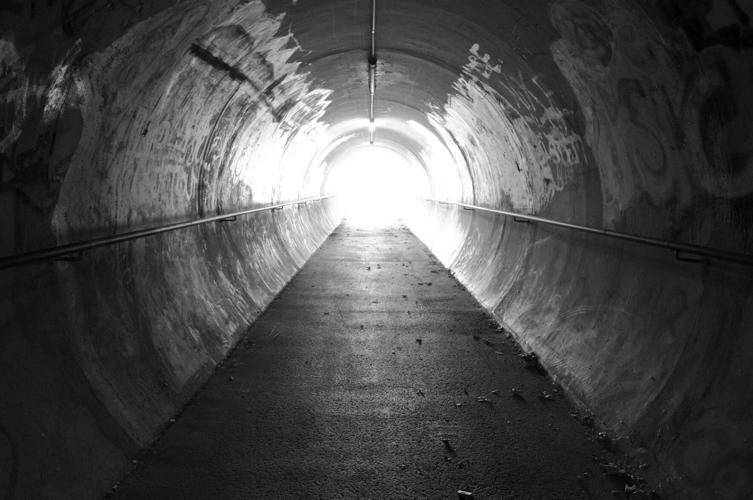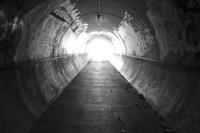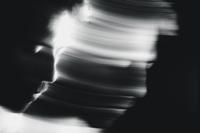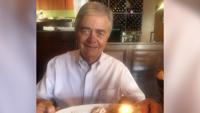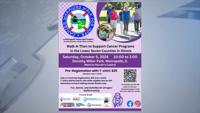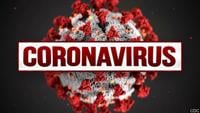(CNN) 鈥� Surgeons were about to saw through 80-year-old Aubrey Osteen鈥檚 chest after a heart attack in December 2020 when he suddenly became conscious.
鈥淚 said, 鈥榃ait a minute here before y鈥檃ll go any further. Give me some more anesthesia, you know?鈥� Well, it took me a minute to realize I wasn鈥檛 in the same dimension they were in, so they couldn鈥檛 hear me anyway.鈥�
Osteen then watched his body 鈥渨eave through the rib cage鈥� and float above the operating table while the surgical team cracked his chest, removed the heart and began to repair the damage. Soon, he heard someone say 鈥渒idneys.鈥�
鈥淏oth kidneys shut down at the same time 鈥� I knew I was gone. And that鈥檚 when I went to the next level,鈥� Osteen said. 鈥淲hen I got up there, I was in the presence of God 鈥� a powerful presence 鈥� with light shining from behind him. The light was brighter than anything I鈥檝e experienced here on Earth, but it wasn鈥檛 blinding.
鈥淎nd there was the sweetest angel that comforted me and told me 鈥楻elax. Everything鈥檚 going to be fine,鈥� and that I was going to have to go back,鈥� said Osteen, now 82.
鈥淚 know now that I was sent back to tell others about my experience.鈥�
Near-death experiences
What happened to Osteen that winter day is what experts call a 鈥渘ear-death experience.鈥� It can occur when doctors bring a person back to life after the heart flatlines and breathing stops 鈥� which happens when a person dies for any reason, not just during a heart attack.
Millions of people have reported near-death experiences since , was invented in 1960, said Dr. Sam Parnia, an NYU Langone Health intensive care physician who has researched the phenomena for decades.
Parnia is the senior author of a new study designed to uncover what he calls the 鈥渉idden consciousness鈥� of death by measuring electrical activity in the brain when the heart stops and breathing ceases.
鈥淢any people report the same experience. Their consciousness became heightened and more vivid, and their thinking became sharper and clearer all while doctors like myself are trying to revive them and think they鈥檙e dead,鈥� said Parnia, an associate professor at NYU Grossman School of Medicine in New York City.
鈥淭hey have a sensation they have separated from the body and can see and hear doctors and nurses, and they were able to report what doctors were doing to them in a 360-degree way that鈥檚 inexplicable to them,鈥� he added.
In addition, people often review their entire lives, remember thoughts, feelings and events they normally couldn鈥檛, and begin to evaluate themselves based upon principles of morality and ethics. It鈥檚 a 鈥済lobal comprehension of their behavior throughout life where they can no longer deceive themselves,鈥� Parnia said.
People also report seeing a God-like being Parnia says can be interpreted in different ways: 鈥淚f you happen to be a Christian, you say, 鈥業 saw Jesus鈥� and if you happen to be an atheist, you say 鈥業 saw this incredible being of love and compassion.鈥� All of this has been reported now for more than 60 years.鈥�
Recording brain waves while undergoing CPR
In the study, in the journal Resuscitation, teams of trained personnel in 25 hospitals in the United States, the United Kingdom and Bulgaria followed doctors into rooms where patients were 鈥渃oding鈥� or 鈥渢echnically dead,鈥� Parnia said.
While doctors performed CPR, the research teams attached devices that measured oxygen and electrical activity to the dying person鈥檚 head. The average resuscitation attempt lasted between 23 and 26 minutes. However, some doctors continued to perform CPR for up to an hour, the study found.
鈥淩esuscitation is a very tense, challenging circumstance. It鈥檚 very high intensity,鈥� he said. 鈥淣obody鈥檚 ever done this before, but our independent research teams were successful in carrying out the procedures without interfering in the medical care of patients.鈥�
Brain activity was measured at two- or three-minute intervals, when doctors had to stop chest compressions or electric shocks to see if the patient鈥檚 heart would restart, Parnia said.
鈥淭here was no movement. It was a silence. That鈥檚 when we would take measurements to see what鈥檚 happening. We found the brains of people who are going through death have flatlined, which is what you would expect,鈥� Parnia said.
鈥淏ut interestingly, even up to an hour into the resuscitation, we saw spikes 鈥� the emergence of brain electrical activity, the same as I have when talking or deeply concentrating,鈥� he added.
Those spikes included gamma, delta, theta, alpha and beta waves, according to the study.
Unfortunately, only 53 people of the 567 people in the study, or 10%, were brought back to life. Of those, 28 people were then interviewed as to what they could recall from the experience. Only 11 patients reported being aware during CPR and only six reported a near-death experience.
However, those experiences were categorized along with testimonies from 126 survivors of cardiac arrest who were not in the study, and 鈥渨e were able to show very clearly that the recorded experience of death 鈥� a sense of separation, a review of your life, going to a place that feels like home and then a recognition that you need to come back聽 鈥� were very consistent across people from all over the world,鈥� Parnia said.
In addition, the study took the recorded brain signals and compared them with brain signals done by other studies on hallucinations, delusions and illusions and found them to be very different, he added.
鈥淲e were able to conclude that the recalled experience of death is real. It occurs with death, and there鈥檚 a brain marker that we鈥檝e identified. These electrical signals are not being produced as a trick of a dying brain, which is what a lot of critics have said.鈥�
Did the study actually measure consciousness?
Some experts in the field were less convinced by the study鈥檚 conclusions, which were first presented at in November 2022 and by the media.
鈥淭his latest report of persistent brain waves after cardiac arrest has been blown out of proportion by the media. In fact, his team did not show any association between these brain waves and conscious activity,鈥� said Dr. Bruce Greyson, Carlson Professor Emeritus of Psychiatry and Neurobehavioral Sciences at the University of Virginia School of Medicine in Charlottesville.
鈥淭hat is, those patients who had near-death experiences did not show the reported brain waves, and those who did show the reported brain waves did not report near-death experiences,鈥� Greyson told CNN via email.
Greyson, who was not involved in the new study, is the coeditor of 鈥淭he Handbook of Near-Death Experiences: Thirty Years of Investigation.鈥� He and cardiologist Dr. Pim van Lommel, a Dutch researcher and writer on near-death experiences, submitted comments to the journal to publish alongside the new study. They pointed to the study鈥檚 statement that 鈥渢wo of the 28 interviewed subjects had EEG data, but weren鈥檛 among those with explicit cognitive recall.鈥�
鈥淎ll (the study) has shown is that in some patients there is continued electrical activity in the head that occurs during the same period that other patients report having NDEs (near-death experiences),鈥� Greyson said.
It鈥檚 correct that the study was not able to match electrical activity with a near death experience in the same patient, Parnia said.
鈥淥ur sample size wasn鈥檛 large enough. Most of our people didn鈥檛 live so we didn鈥檛 have hundreds of survivors. That鈥檚 the reality of it,鈥� he said. 鈥淥f those that did live and had readable electroencephalograms, 40% of them showed that their brain waves went from flatline to showing normal signs of lucidity.鈥�
In addition, Parnia said, people who survive often have fragmented memories or forget what they experienced due to heavy sedation in intensive care.
鈥淎bsence of record doesn鈥檛 mean there鈥檚 an absence of consciousness,鈥� Parnia said. 鈥淯ltimately, what we鈥檙e saying is, 鈥楾his is the great unknown. We鈥檙e in uncharted territory.鈥� And the key thing is that these are not hallucinations. These are a real experience that emerges with death.鈥�
The-CNN-Wire
鈩� & 漏 2023 Cable News Network, Inc., a Warner Bros. Discovery Company. All rights reserved.

